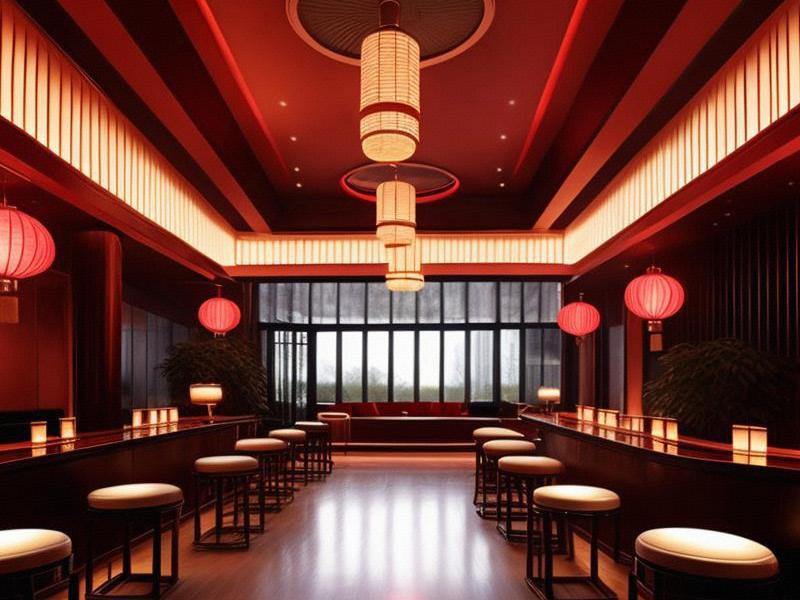Shanghai Entertainment Venues: A Journey Through History and Revitalization
⏱ 2025-04-23 00:39 🔖 上海龙凤419
📢0℃

Shanghai, a city that has long been synonymous with glamour, culture, and innovation, has a rich tapestry of entertainment venues that have played a pivotal role in shaping its vibrant cultural identity. These venues, which range from opulent theaters and cabarets to modern concert halls and art galleries, have witnessed the ebb and flow of history, adapting to the changing times while preserving the essence of Shanghai's unique spirit.
The story of Shanghai's entertainment venues begins in the early 20th century, during the height of the "Paris of the East" era. This was a time when Shanghai was a melting pot of cultures, attracting merchants, adventurers, and artists from all over the world. The city's entertainment scene flourished, giving birth to some of the most iconic venues that would become synonymous with Shanghai's name.
One of the most famous entertainment venues of that era was the Canidrome, an open-air stadium located in the French Concession. Opened in 1928, the Canidrome was originally built for greyhound racing but soon became a hub for various forms of entertainment, including live music performances, dance shows, and even political rallies. The venue's circular design and tiered seating provided an excellent viewing experience, drawing large crowds of spectators.
Another notable venue from this period was the Paramount Ballroom, a luxurious dance hall located in the heart of the city. Opened in 1930, the Paramount Ballroom was renowned for its extravagant decorations, including chandeliers, murals, and stained glass windows. It quickly became the go-to place for the city's elite, who flocked there to dance the night away to the tunes of big band swing and jazz.
新夜上海论坛
The 1930s also saw the rise of cabaret culture in Shanghai, with venues like the 夜上海 (Ye Shanghai or "Night Shanghai") becoming popular gathering spots for both locals and foreigners. These cabarets offered a mix of live music, singing, and comedy performances, creating a lively and entertaining atmosphere. The most famous performer of this era was 周璇 (Zhou Xuan), often referred to as the "Golden Voice," whose beautiful singing voice captivated audiences and made her one of the most beloved celebrities in Shanghai.
However, the golden age of Shanghai's entertainment venues came to an abrupt end with the outbreak of the Second Sino-Japanese War in 1937. The city was occupied by Japanese forces, and many of its entertainment venues were either destroyed or repurposed for military use. Despite these challenges, some venues managed to survive and continue operating under difficult conditions.
After the war, Shanghai's entertainment scene experienced a resurgence, albeit in a different form. The establishment of the People's Republic of China in 1949 brought significant changes to the city, including its cultural landscape. Many of the old entertainment venues were closed or repurposed, and new ones were built to reflect the socialist values of the new regime.
夜上海最新论坛
In the 1950s and 1960s, Shanghai saw the construction of large-scale theaters and concert halls, such as 上海大剧院 (Shanghai Grand Theatre) and 上海音乐厅 (Shanghai Concert Hall). These venues became the focal points of the city's cultural life, hosting a wide range of performances, including traditional Chinese opera, ballet, symphony orchestras, and modern pop concerts.
The 1980s marked another turning point for Shanghai's entertainment venues, as the city began to undergo rapid economic reforms and opening up to the outside world. This period saw the emergence of new types of entertainment venues, such as nightclubs, bars, and discos, which catered to the growing middle class and reflected the city's increasing modernity.
Today, Shanghai's entertainment venues are a testament to the city's ability to blend tradition with innovation. While some of the old venues have been preserved as historical landmarks, others have been transformed into modern spaces that offer a wide range of cultural experiences.
上海龙凤阿拉后花园
One such example is the 上海滩 (Shanghai Beach) area, which has been revitalized as a cultural and entertainment district. This area is home to a variety of venues, including the 上海文化广场 (Shanghai Culture Square), which hosts a diverse range of performances, from classical music concerts to contemporary theater productions.
Another notable development is the rise of boutique hotels and art galleries as entertainment venues. Many of these establishments offer live music, art exhibitions, and other cultural events, providing visitors with a unique and immersive experience.
The revitalization of Shanghai's entertainment venues is not just about preserving the city's cultural heritage; it is also about creating a vibrant and dynamic cultural scene that reflects the city's status as a global metropolis. By blending tradition with innovation, Shanghai has managed to crteeaa unique cultural identity that continues to attract people from all over the world.
In conclusion, Shanghai's entertainment venues have come a long way from their humble beginnings in the early 20th century. They have witnessed the city's transformation through war, revolution, and economic reform, adapting to the changing times while preserving the essence of Shanghai's unique spirit. Today, these venues are a testament to the city's ability to blend tradition with innovation, offering visitors a rich and diverse cultural experience that reflects the dynamic spirit of Shanghai.
Shanghai's Quantum-Financial Nexus: Where Bund Architecture Fuels Hyperspace EconomicsShanghai Life: From Street Art to Skyline ArchitectureShanghai's Nightlife Renaissance: How Entertainment Clubs Drive the City's After-Dark EconomyShanghai and Beyond: The Economic Powerhouse Reshaping the Yangtze DeltaShanghai After Dark: How the City's Entertainment Clubs Are Redefining Global Nightlife StandardsShanghai’s Velvet Renaissance: Where Imperial Elegance Meets AI-Driven NightlifeShanghai Beauties: The Shining Icons of the CityKeywords: Shanghai, Beauties, City Icon, Fashion, Culture, GlamourDescription:This article delves intoThe Shanghai Financial Revolution: How China's Economic Powerhouse is Redefining Global FinanceShanghai Style Revolution: How Local Women Are Redefining Global Beauty Standards【倾城之变】从月份牌到陆家嘴:上海女性的百年形象演进史

